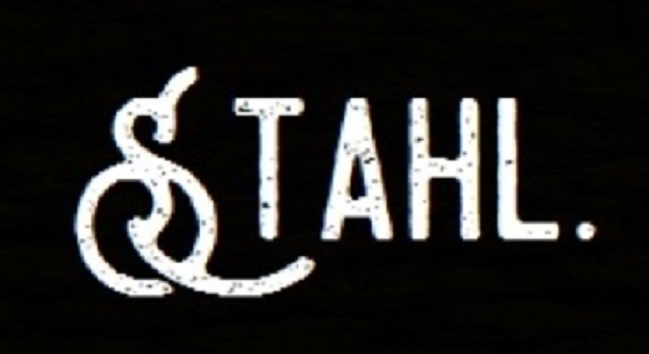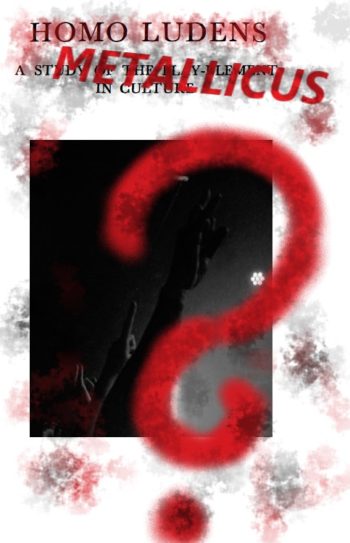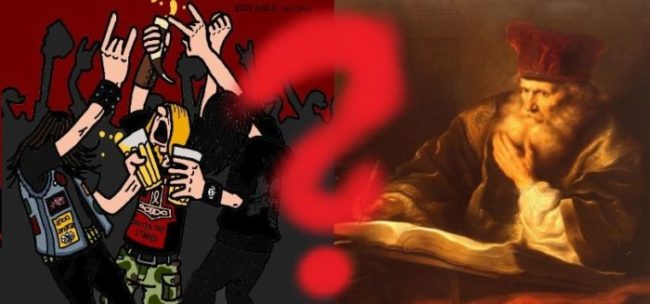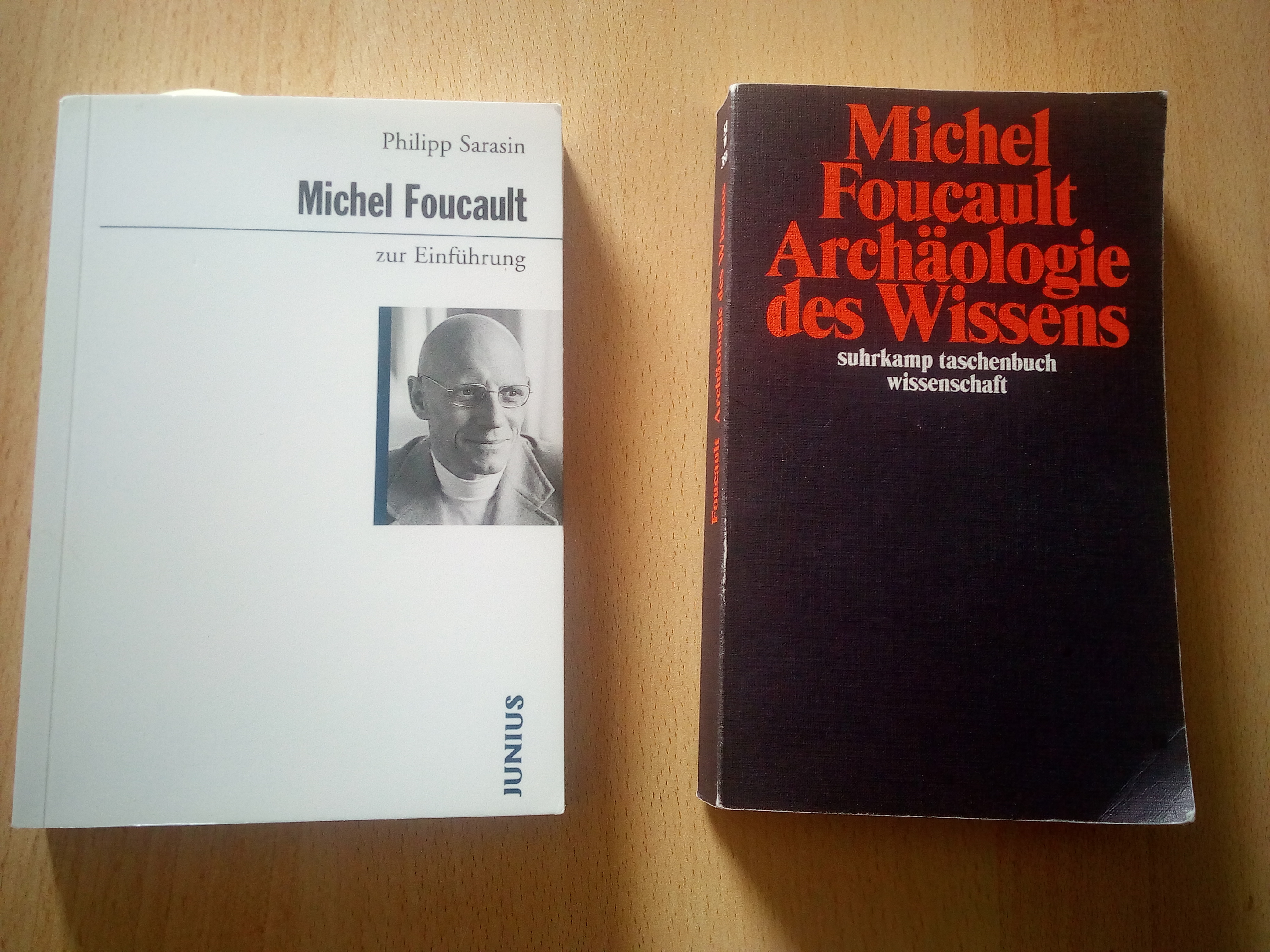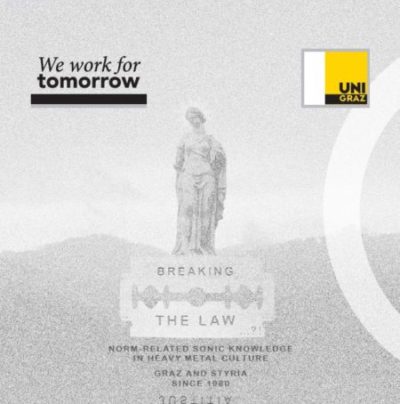Dutch historian Johan Huizinga (1872-1945) was one of the pioneers of modern and postmodern cultural history. His narratives, overflowing with colourful, metaphoric and anthropologic plots of history, still inspire today’s scientific historiography.1 Originally being a scholar of Indo-European languages and linguistics, he turned to history around 1900. He became a professor of General and Dutch history at Groningen University in 1905, and finally of General history at Leiden University in 1915 (until 1942).
There in Leiden, he was resistant to antisemitism during the Nazi occupation of the Netherlands. Huizinga’s most famous work is ‘The Waning of The Middle Ages’, first published in Dutch in 1919.2 In this classic book, he described the 14th and 15th centuries as an age of decline, metaphorically expressed in the picture of the season of fall; for Huizinga, they were the ‘autumn of the middle ages’.3 Other famous and influential works are ‘Erasmus and the Age of Reformation’ (1924), ‘Dutch Civilisation in the Seventeenth Century’ (1941), and ‘Homo ludens: a Study of the Play-element in Culture’.4
Methodologically, all of those books were highly innovative. They focussed on art, theatrics and discourse – long before the dawn of the New Cultural History at the end of the 1980s.5 One could go as far as describing Huizinga’s cultural history as ‘proto-constructivist’ or ‘crypto-constructivist’, at least in his deep understanding of the metaphorical and aesthetic constitution of culture.
In this blog post, I want to take up the methodology and questions Huizinga treated in ‘Homo ludens’. In this study, the author states that basically all culture has a an element of play. Play and playful elements, elements of game, are present in knowledge and science, law, art, languages, warfare.6 He gives a reading of Homo sapiens as Homo ludens. This is his operational definition of play:
Summing up the formal characteristics of play we might call it a free activity standing quite consciously outside ‘ordinary’ life as being ‘not serious’, but at the same time absorbing the player intensely and utterly. It is an activity connected with no material interest, and no profit can be gained by it. It proceeds within its own proper boundaries of time and space according to fixed rules and in an orderly manner. It promotes the formation of social groupings which tend to surround themselves with secrecy and to stress their difference from the common world by disguise or other means.7
This definition of the plays Homo ludens is playing in constructing culture is (proto-)constructivist and relevant until today in several ways: it stresses the own space and time of plays which basically says that plays have their own discourses; it emphasizes that plays in culture follow fixed rules which is a core feature of discourses, according to Foucauldian theorizing, too.8
Finally, the closing remark on the formation of social collectives is nothing less than the thesis that plays have a fundamental role in cultural identity construction; by defining the differences between the collective ‘self’ and the ‘other’, in processes of ‘othering’.9
These are the kinds of plays which Homo ludens played and plays in the course of cultural history. Already Huizinga observed on several occasions in his book that music and its reproduction is play, too.10 Applying Huizinga’s key theorem of play on Metal culture, I want to ask whether in Metal Music Studies Homo ludens is to be defined as Homo ludens metallicus. In the following, I want to show that Huizinga’s perspective opens up the theoretical space of cultural history in Metal Music Studies.
Using the metaphor of Homo ludens metallicus, this post wants, on the one hand, to summarize my (so-far) results of research in this blog, in conceptual ways, showing that Metal Music Studies is a field on the brink of becoming an own discipline. Yet, Metal and Metal Music Studies are a culture and a scientific community which know that they have a past but which do not know this past in professional, scientific and cultural-historical ways – an argument to be proven.
As current discourse shows, there still is a lack of a self-reflexive theorizing of Metal and Metal Music Studies, as an emerging discipline, giving or at least aiming at giving answers to the question what Metal and Metal Studies are.11 This is where my current and future research comes in. It wants to help introducing the historian’s gaze to this flourishing discourse.
On the other hand, I also want to concretize this new perspective, already starting to apply it to Metal and research on Metal. I do so by introducing my theoretical notion of ‘sonic knowledge’. Using this notion, I want to help starting a historian’s narrative of Metal music and its study. Directing the historian’s gaze to Metal and Metal Studies, the notion of sonic knowledge wants to give a genuinely historic reading of its object, connecting it to large- and small-scale historical processes of world history. In some cases, Metal harks back to the Age of Enlightenment since the 18th century, but also to 19th century Classicism and Historism. In other cases, Metal even takes up the roots of ancient Greek, Roman, Egyptian, Assyrian and other oriental discourses of culture and knowlegde.
‘Sonic knowledge’ means that I tread Metal music and all its surrounding networks as a form of (sub-)cultural knowledge which emerges predominantly from acoustic communication: music. This takes up the perspective of the recent discourse of ‘sound history’ which asks for the role of acoustic phenomena in history.12 From my point of view, the rather neutral term of knowledge already describes the formation of a specific discourse of Heavy Metal (from c. 1970 until the mid-1980s) as something new; but also as something new which only was innovative in its ways of connecting the fresh aesthetics of the ‘heavy riff’13 with rather old historic elements of culture.
Just to mention some historic discourses being already there in the 1960s, 1970s and 1980s, until today, which were picked up by Metal history: dark lyrics and atmosphere (this can be traced back, for instance, to Gothic novels and many other forms of literature); rebellion and revolution (rebellion is a key topic of any broad history of Europe and the world, like the French Revolution, the American Revolution, the struggle for Scottish independence and many others; there are countless examples).
Other discourses would be: violence and war (the fascination with violence and violent behaviour, for example, is a key topic in the development of the modern state which should canalize and prevent not-justified violent force; history is, basically, in many cases structured by wars, like the 20th century as the ‘Age of Extremes’ of two world wars); satanism (satanism, i.e. embodied by figures such as Anton Szandor LaVey or Aleister Crowley, was long there before Metal); the virtuosity of the musician (a core topic in the 19th century and its cult of the ‘genius’); the cult of the male (which is there since Ancient times) …
Introducing the historian’s gaze
So, what’s that, the ‘historian’s gaze’? Since poststructuralist theorizing, we know that every scientific discipline has its own discursive strategies and framework, leading to an own construction of its subject, also in theory. This can be charaterized as a discipline’s gaze on its subject. This, of course, is true for history, too. The historian’s gaze is different from the sociologist’s perpective, also from the philosopher’s or the musicologist’s views. This is, must be the case in Metal Music Studies, too – so the historian’s gaze on Metal also should be fruitful for this emerging discourse, if applied conseqently.
What is particular of this view on Metal? When thinking of current research on Metal, in all introductory texts, the history of Metal and Metal Studies is of utmost importance. For instance, Andy R. Brown (a scholar in Media and Cultural Studies) wrote a genealogy of Metal Studies;14 Deena Weinstein (a sociologist) wrote a social and cultural history of Rock and Metal in America;15 Brian Hickam (being a librarian) described the emergence of Metal Studies as ‘amalgamated anectodes’;16 Nicola Masciandaro (a scholar in English studies) authored a ‘personal archeology of headbanging exegesis’;17 a group of social psychologists led by Nelson Varas-Díaz gave a social-psychological reading of the history of the Puerto Rican scene.18
There is nothing wrong with these histories, and also similar ones – yet, they are written by culturalists, sociologists, librarians, linguists, psychologists and so on. In a nutshell and put consciously provocatively: from a historian’s point of view, Metal and Metal Music Studies are a culture and its study which know that they have a history but which yet do not know this history in scientific and self-reflexive, in historic ways. This is where the historian’s gaze comes in.
‘Sonic knowledge’ as a cultural-historical notion
So, what is then ‘sonic knowledge’ and how does it bring in the historian’s gaze? In a pioneering text from 2011, Dominik Schrage (ironically a sociologist again) wrote in a special issue of Studies in Contemporary History on the sound history of the 20th century:
The musical mode of hearing enables us as subjects to comprehensibly experience the effects of sounds and rhythms, be it contemplatively or expressively – plunging into music or dancing to it. Like images sounds cannot be transfered to linguistic meaning without fractures; but, both are experienced as being in harmony with each other, and correspond with moods, affections, and emotions in the experiencing subject. Sounds, melodies, chords and rhythms share a fundament across cultures; but in different musical cultures they are encoded, systematized and linked to harmony theories in different ways.19
Linking this core statement of sound history to the genuine interest of a historian working in Metal Music Studies, implies we have to write a history of the sound of Metal – connecting it to the overall history of the world; to our current era of postmodernity, but also to other eras like the 20th before ‘1968’, the Age of Enlightenment since the French Revolution, the Early Modern period since about 1500, sometimes also to Medieval and Ancient epochs. The key is to see today’s Metal as a historically formed set of elements of cultural knowledge – formed predominantly in acoustic musical communication. We can start introducing the historian’s gaze to Metal Music Studies by seeing it as sonic knowlegde in that sense.
Using the notion of sonic knowledge, we can historically ask how the acoustic encodement of sadness, darkness and gloomy atmospheres in Gothic Metal music is linked to the history of the ‘Gothic’ culture of the Victorian Age of the 19th century.
We can historically ask how the identity of the metalhead as a rebel in a social revolution, acoustically encoded in Metal, is connected to historical narratives of revolutions, such as the French, American and Russian Revolutions in the 18th and 20th centuries, but also the cultural revolution of ‘1968’, or the history of Mao’s ‘Cultural Revolution’ – there are myriads of historic interferences.
We should historically research how the representation of and fascination with violence and war, especially with World War II and Nazi Atrocities, in Thrash and Extreme Metal music since the mid-1980, retells the history of the 20th century. Already the influential British historian Eric Hobsbawm called it ‘The Age of Extremes’.20 It do not think that the genre name of ‘Extreme Metal’, surfacing in the 1980s and 1990s, came out of the blue – rather this was part of the final phase of the ‘Age Of Extremes’.
Furthermore, historians should explore how the image of the ‘guitar wizard’ or even ‘guitar hero’, which is prominent in Metal culture, continues writing the history of the musical virtuoso of classical music in the 19th century, with figures such as ‘violin wizard’ Niccolò Paganini, or ‘piano heroes’ like Frédéric Chopin and Franz Liszt. This is, as known, a thought already to be read in Robert Walser’s seminal book on Metal from 1993, but – again – this book was written a musicologist.21 The historian’s gaze would look for a deepeer historical contextualization in the overall history of the ‘Long 19th Century’ (1789-1914).22
Also, we ought to take a historic look at gender roles in Metal music. There is a lot of ongoing research on gender in Metal Studies.23 However, it also should be deeply connected to concepts like historian Wolfgang Schmale’s theory of ‘collective performative speech acts’, as developed in his recent book ‘Gender and Eurocentrism: a Conceptual Approach to European History’.24
This is what I imagine the notion of sonic knowledge to do and to be. It should approach Metal and Metal Studies historically, seeing it as a contingently formed set of elements of cultural knowledge, constructed in the sound history of Metal. In this understanding of the term, knowledge is not only seen as a purely cognitive phenomenon but also as a discursive, praxeological, physical and sensual, most of all acoustic phenomenon in history.
Finally, taking Metal as sonic knowlegde probably enables us to think new inter- and transdisciplinary research options in Metal Studies. So far, the most prominent disciplines in our field are social and cultural studies, philosophical reflections and musicology. Seeing Metal as such a form of knowledge opens up gateways to other discourses of knowledge, which are deeply linked to sociology, philosophy and musicology, for instance law and politology.
The perspective of law is especially important because the philosophical and sociological foundations of law are intrinsically linked to key topics of Metal such as rules, norms, rule-breaking and law-breaking. For instance, it would be extremely tempting to do a discourse analysis of the representation of law, human rights and the rule of law in Heavy Metal lyrics – just think of Judas Priest’s classic anthem ‘Breaking The Law’ from 1980, which often is refered to as defining Priest’s identity. Another well known example is Metallica’s album ‘…And Justice For All’ from 1988, whose cover portrays the Roman figure of Justitia as a blindfolded statue.
In a nutshell, taking up the perspective stemming from Huizinga’s Homo ludens, we should use the historian’s gaze in the concept of sonic knowledge to ask whether Metal is a game historically played by a Homo ludens metallicus – a probably new figure in Metal Studies, playing all his way through history, creating new heaviness by combining it with quite old narratives of human history. This is what I want to do in my upcoming monograph on Metal history and also in a proposal for a four-years research project on the history of Metal in Graz, Styria and Austria, in a European and global context.25
For a short portrait of Huizinga see C. Strupp, ‘Johan Huzinga’, in: L. Raphael (ed.), Klassiker der Geschichtswissenschaft, 1, Munich: Beck, 2006, 190-211.; also see W. Otterspeer, Reading Huizinga, Amsterdam: Amsterdam University Press, 2010. ↩
For the English version, first published in 1924 see J. Huizinga, The waning of the Middle Ages: a study of the forms of life, thought and art in France and the Netherlands in the fourteenth and fifteenth centuries, London: Folio Society, 1999. ↩
Ibid. ↩
Idem, Erasmus and the age of Reformation: with a selection from the letters of Erasmus, New York, NY: Scribner, 1924; idem, Dutch civilisation in the seventeenth century, and other essays, London: Collins, 1968; idem, Homo ludens: a study of the play-element in culture, London e.a.: Routledge and Kegan Paul, 1949. ↩
L. Hunt and A. Biersack (eds.), The New Cultural History, Berkeley, CA: University of California Press, 1989. ↩
Idem, Homo ludens. ↩
Ibid., 13. ↩
A. Landwehr, Historische Diskursanalyse, Frankfurt: Campus, 2009. ↩
For a recent example see M. Wintle, ‘Islam as Europe’s Other throughout History: some discontinuities‘, History , 101, 344 (2016), 42-61. ↩
Huizinga, Homo ludens, 42, 158-162, 187-8. ↩
See for introductory books and texts F. Hösch and A.-K. Höpflinger (eds.), Methoden der Heavy Metal Forschung, Münster: Waxmann, 2014; Jeremy Wallach e.a. (eds.) Metal Rules the Globe. Heavy Metal Music Around the World, Durham, NC: Duke Universtiy Press, 2011; A. R. Brown e.a. (eds.), Global Metal Music and Culture. Current Directions in Metal Studies, Abingdon: Routledge, 2016; B. Gardernour Walter e.a. (eds.), Heavy Metal Studies and Popular Culture, Houndmills: Palgrave Macmillan, 2016; also this special issue on ‘Metal Studies? Cultural Research in the Heavy Metal Scene’: Journal for Cultural Research 15, 3 (2011). ↩
See for an introduction to the field, especially in German discourse D. Schrage, ‘Erleben, Verstehen, Vergleichen. Eine soziologische Perspektive auf die auditive Wahrnehmung im 20. Jahrhundert’, in: Zeithistorische Forschungen/Studies in Contemporary History, 2, 8 (2011), online, URL: http://www.zeithistorische-forschungen.de/2-2011/id=4691. Accessed 26.02.2018; also see G, Paul and R. Schock (eds.) Sound der Zeit. Geräusche, Töne, Stimmen – 1889 bis heute, Göttingen: Wallstein, 2013. ↩
For an in-depth analysis see J.-P. Herbst, ‘Historical development, sound aesthetics and production techniques of the distorted electric guitar in metal music’, in Metal Music Studies, 3, 1 (2017), 23-46; idem, ‘Heaviness and the electric guitar: Considering the interaction between distortion and harmonic structures’, in Metal Music Studies, 4, 1 (2018), 95-113; also see D. Elflein, Schwermetallanalysen. Die musikalische Sprache des Heavy Metal, Bielefeld: Transcript, 2010. ↩
A. R. Brown, ‘Heavy Genealogy: Mapping the Currents, Contraflows and Conflicts of the Emergent Field of Metal Studies, 1978-2010, in Journal for Cultural Research 15, 3 (2011), 213-242. ↩
D. Weinstein, Rock’n America. A Social and Cultural History, Toronto: University of Toronto Press, 2015. ↩
B. Hickam, ‘Amalgamated anecdotes: Perspectives on the history of metal music and culture studies ‘, in Metal Music Studies 1, 1 (2014), 5-23. ↩
N. Masciandaro, ‘Metal Studies and the Scission of the Word: A Personal Archaeology of Headbanging Exegesis’, in Journal for Cultural Research 15, 3 (2011), 227-250. ↩
N. Varas-Díaz e.a., ‘Metal at the fringe: a historical perspective on Puerto Rico’s underground Metal scene, in Gardenour Walter e.a, Heavy Metal Studies, 99-129. ↩
Schrage, Erleben, Verstehen, Vergleichen. My translation. ↩
Eric Hobsbawm, The Age Of Extremes. The Short Twentieth Century, 1914-1991, London: Michael Joseph, 1994. ↩
R. Walser, Running with the Devil: Power, Gender, and Madness in Heavy Metal Music, Hanover, NH: New England University Press, 1993, 57-107. ↩
E. Hobsbawm, The Age of Revolution: Europe: 1789–1848, London: Weidenfeld and Nicolson, 1962; idem, The Age of Capital: 1848–1875, London: Weidenfeld and Nicolson, 1975; idem, The Age of Empire: 1875–1914, London: Weidenfeld and Nicolson, 1987. ↩
For example, see F. Heesch and N. Scott (eds.), Heavy Metal, Gender and Sexuality: Interdisciplinary Approaches, Abingdon: Routledge, 2016. ↩
W. Schmale, Gender and Eurocentrism: a Conceptual Approach to European History, Stuttgart: Franz Steiner, 2016. ↩
P. Pichler, Metal Music and Sonic Knowledge in Europe, 1970 to the Present: a Cultural History, Emerald Publishers, forthcoming, 2019; the working title of this project is: ‘Sonic Knowledge in Heavy Metal Music. A Basic Research Project on the Cultural History of a Global Subculture in Styria, Austria and Europe, from the 1980s to the Present.’ ↩
